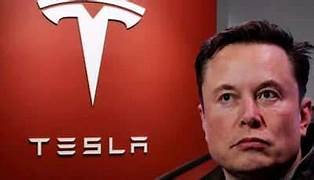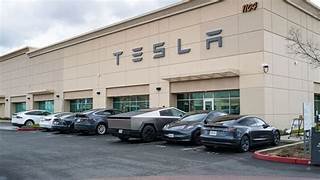In a surprising shift that’s turning heads across the auto industry, General Motors (GM) has surged forward in electric vehicle EV sales while Tesla, long the undisputed leader in the EV space, finds itself grappling with declining momentum and public scrutiny surrounding its CEO, Elon Musk. The gap between the two giants seems to be narrowing, and for the first time in years, GM is capturing both market share and public confidence at an impressive pace.
This rise isn’t just about numbers on a spreadsheet—it’s a story of trust, timing, and transformation. As Tesla navigates a turbulent stretch, GM is presenting itself as the steady, future-ready alternative that many consumers and investors have been quietly hoping for.
GM’s Unexpected Climb to the Top
For years, GM was seen as a legacy automaker struggling to reinvent itself for the electric age. But that perception is changing rapidly. GM has spent the last several years laying the groundwork for a full-scale EV revolution, and now the fruits of that labor are starting to show.
From the sleek Chevrolet Blazer EV to the widely accessible Bolt EUV, GM’s EV portfolio is growing and resonating with drivers across income levels and lifestyles. Their vehicles are not just electric—they’re practical, stylish, and increasingly affordable. This combination has helped GM strike a chord with middle-class buyers who want to go electric without breaking the bank.
GM’s decision to invest heavily in battery technology and American manufacturing facilities has also played a critical role in its rise. The company’s Ultium battery platform is proving to be a game changer, offering improved range, better safety, and faster charging. This kind of forward-looking technology, backed by the credibility of a century-old brand, is helping GM gain serious ground.

Tesla’s Challenges: More Than Just Market Forces
Meanwhile, Tesla appears to be facing one of its most challenging chapters. Although the company still leads in overall EV sales globally, its grip on the American market is showing signs of loosening. A large part of that shift stems not just from increased competition, but from growing controversies surrounding its CEO.
Elon Musk, once celebrated as a visionary disruptor, is now drawing criticism for his increasingly polarizing public persona. His comments on social media, involvement in political debates, and unpredictable management style have sparked backlash from both consumers and investors. For a company so closely tied to its founder, this negative press is proving hard to ignore.
Additionally, Tesla’s product lineup, while innovative, has been criticized for stagnation. Many of its core models—the Model S, Model 3, and Model Y—have seen only incremental changes over the years. In contrast, competitors like GM are rolling out new designs, trims, and technology with greater speed and variety.
Consumer Confidence Shifting to GM
The result of these contrasting trajectories is clear: consumer confidence is gradually shifting. More buyers are exploring GM’s EVs not just out of curiosity, but because they offer value, dependability, and the sense of being part of a larger, long-term movement toward sustainability.
People are responding positively to GM’s practical approach—vehicles that fit into real lives, not just tech-forward fantasies. Drivers want reliable transportation, good service, and a company that feels grounded. GM, with its sprawling dealership network and decades of experience in customer care, delivers on those expectations.
In contrast, Tesla’s service experience has faced criticism for long wait times and limited repair options. In places where Tesla’s infrastructure hasn’t kept up with demand, GM is stepping in with a more mature and scalable system.
Fleet Sales and Commercial Expansion
Another major factor contributing to GM’s EV success is its focus on fleet and commercial sales. While Tesla has primarily marketed its vehicles to individual consumers, GM is aggressively targeting business clients, delivery services, and municipal fleets.
The electric Silverado, for instance, is generating buzz among companies looking for powerful, sustainable trucks that can handle serious workloads. By offering EV solutions that meet both personal and commercial needs, GM is expanding its influence into areas where Tesla has less presence.
This dual-market strategy is allowing GM to scale rapidly and tap into revenue streams that remain largely untapped by Tesla.
Technology Meets Tradition
GM’s rising success is also a lesson in the power of balancing innovation with tradition. While Tesla is a symbol of Silicon Valley disruption, GM is leaning into its identity as a trusted American manufacturer with a new electric vision. The company is blending cutting-edge technology with a legacy of craftsmanship, giving customers the best of both worlds.
From advanced driver-assist features to over-the-air updates, GM’s vehicles are matching Tesla in tech, while outshining it in areas like comfort, customer service, and accessibility. This balance is striking a chord with buyers who want futuristic technology without sacrificing familiarity and practicality.

What the Numbers Are Saying
Though Tesla still leads in raw EV volume globally, recent quarters have shown slower-than-expected growth and even sales dips in key regions. GM, on the other hand, has posted double-digit growth in EV sales, outpacing predictions and pleasing shareholders. More importantly, GM’s EV market share in the U.S. is climbing steadily.
What makes GM’s growth especially compelling is that it’s coming from a broad base. The company isn’t relying on one or two blockbuster models—it’s creating a whole ecosystem of electric vehicles that appeal to a wide audience. That kind of diversity is likely to provide long-term stability, even as the EV market continues to evolve.
The Public Mood and the Musk Effect
One cannot ignore the changing public mood. The very traits that once made Musk appealing—his boldness, risk-taking, and blunt commentary—are beginning to feel more like liabilities than assets. In a post-pandemic world where people are craving stability, empathy, and accountability, GM’s calm, consistent leadership is hitting the right notes.
It’s no longer just about who builds the fastest or flashiest car. It’s about trust, responsibility, and community. And in those areas, GM is quietly and steadily winning hearts.
The Road Ahead: A New Chapter in the EV Race
This changing landscape doesn’t mean Tesla is done—not by a long shot. The company still has powerful innovations in the pipeline and a global fanbase. But it does suggest that the EV race is far from over, and the once-clear winner may now face real competition.
GM’s surge is a signal to the industry: the future of electric mobility will be shaped not just by innovation, but by consistency, credibility, and customer connection. And right now, GM is checking all the boxes.
The coming years will be a fascinating test of resilience and vision. Will Tesla reinvent itself and regain its momentum? Or will GM continue to rise as the steady hand guiding millions into an electric future?
For consumers, it’s a moment of empowerment. They now have real choices. And as the auto world watches this shift unfold, one thing is clear—GM’s electric surge is no fluke. It’s the result of commitment, strategy, and timing. And for Tesla, that means it’s time to take the competition seriously.
The electric revolution isn’t coming. It’s already here. And GM is ready to lead.
Also read : U.S. Retail Giant Lays Off 1,500 Amid Restructuring Plans.





